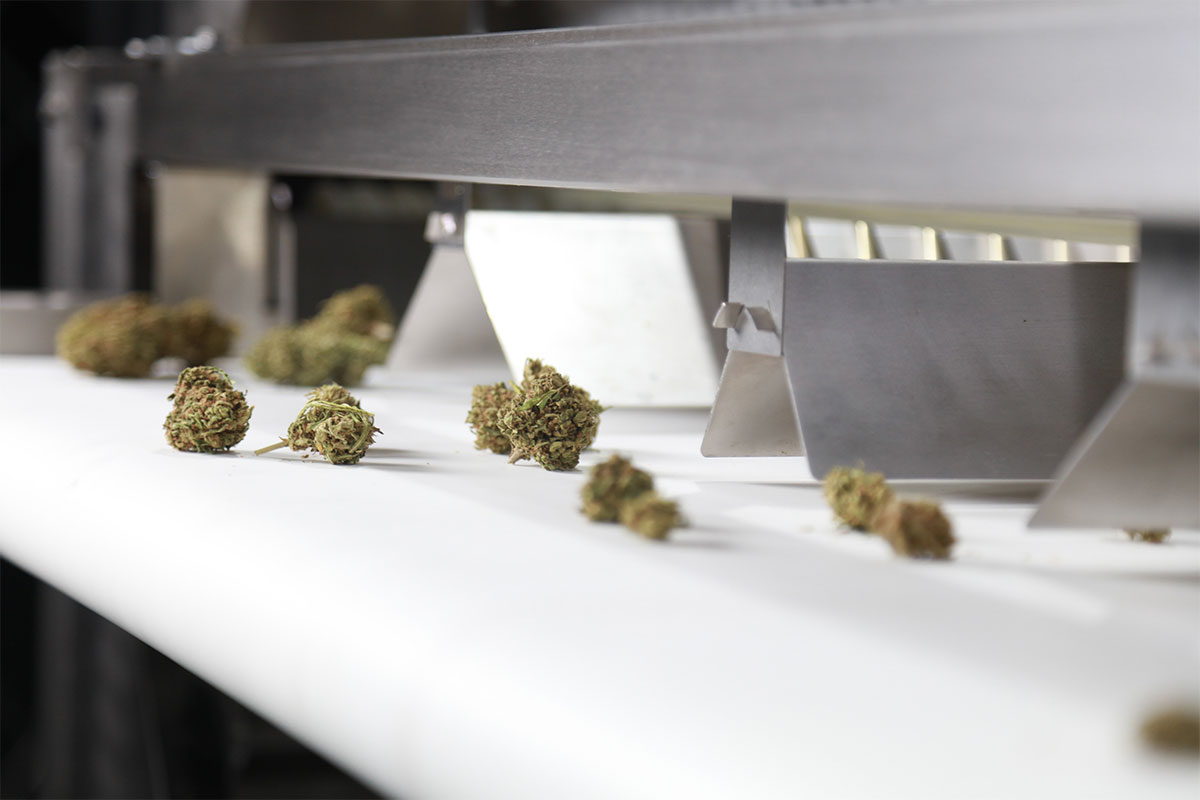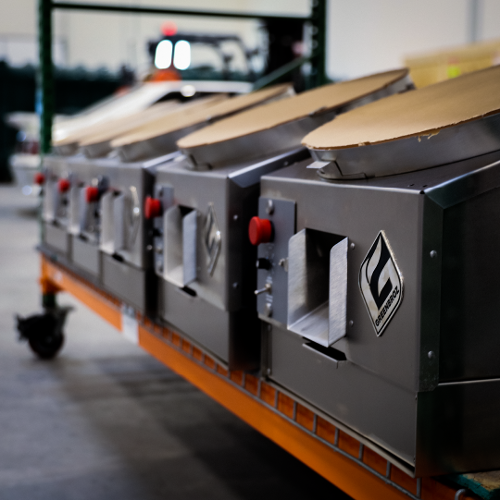The Ultimate Guide to Cannabis Equipment Maintenance
In the world of cannabis cultivation, your equipment is your best friend. Keeping it in pristine condition isn't just about prolonging its lifespan;...

With the amount of care and attention that goes into growing a high-quality cannabis plant that’s potent and bursting with aromatic terpenes, it’s not surprising that so many cultivators aren’t interested in bringing automated machinery into their operations. But once cultivators acknowledge that time is the real enemy, speeding up the sorting process while taking great caution to preserve the plant’s desirable compounds is the natural solution.
Poor experiences with vibrating sorters that rip trichomes off their carefully cured nugs have left a lasting impression on the industry, but rough equipment is not the only way to speed up the sorting process. Today’s best sorting machines can sort 1.5 pounds of raw plant material (or more) every minute while protecting the delicate and coveted compounds responsible for the quality and ultimately the price of the final product.
Learn how you can speed up your sorting process without the human touchpoints or mechanical vibrations that degrade the quality of your cannabis in this helpful guide.
Knowing exactly when to harvest cannabis is more about the cultivator’s experience than following any general guidelines, as different genetics grown under different conditions will not fully develop at the same rate. You may discover that an indica-dominant cultivar typically takes 50-60 days to reach maturity, while a sativa-dominant cultivar will be ready for harvest in 60-70 days, but the truth of the matter is it depends on too many factors to provide a reliable range anyone can use. Deviation in the growing medium, nutrients, light, location, genetics and other factors will all impact the plant’s growth in significant ways.
This high level of variability from numerous external factors is why many growers turn to trichomes, a secondary metabolite, to help determine if the plant is ready for harvest. Trichomes are tiny, mushroom-shaped appendages found in abundance on female cannabis plants. They’re the location where the plant’s more than 400 active compounds, such as cannabinoids like THC and aromatic terpenes, are produced and stored.
Many growers used a jeweler’s loupe or small microscope (at least 40x magnification) to examine the trichome heads, looking for a change in color from clear to a milky-amber hue. When 20-50 percent of the plant’s trichome heads appear amber in color, some cultivators believe this is the best time to harvest.
Prepare for harvesting by gathering the necessary equipment, including large pruning shears, small trimming scissors, latex-free gloves, rubbing alcohol for cleaning the resin buildup, and a tray to collect your buds.
Start by cutting off branches at the base of the plant, making sure to only separate what you know you can process quickly. Remove the large fan leaves and trim the so-called sugar leaves, which are the smaller leaves sticking out of the buds. Save all of your trimmings and plant material because it can be processed further down the line.
For drying cannabis, you should leave the buds on the branch to hang from a line. Your drying room should be temperature (60-65ºF) and humidity controlled (62%) for the roughly five-day process. You’ll know you’re ready for curing when the outside of the buds are dry to the touch and the smaller stems snap easily under pressure instead of bending.
The curing process is the craft cultivator's time to shine, allowing them to create a smooth-smoking, great-tasting flower. This finishing stage helps break down the plant’s chlorophyll and sugars so the final product can reach its optimal stage.
Fill an airtight mason jar about 75% of the way with your dried buds and store in a dark, cool room (68ºF). Open your jars daily for about 10 minutes to refresh the air for the first couple of weeks and gently reposition the buds to ensure an even cure. After 2-3 weeks, you can introduce new air once per week while checking for ripeness. The full curing process can take up to six months.
If you’re not sorting your harvest, you might be tossing out a good product with some real value in the form of shake or smaller popcorn buds that can be used for pre-rolls and/or sold as deeply-discounted eighths. This often-overlooked step can be accomplished by hand or machine to greatly speed up the process and provide more consistent results.
For some boutique or legacy cultivators with a highly experienced staff, manual sorting can be a great way to help ensure the marijuana buds are treated with the delicate care they need to retain their appearance and value.
While some inconsistencies may come through when sorting by hand, the biggest drawback here is the necessity for time-consuming labor and the experience required to get the job done right, both of which come with high costs that eat into your bottom line.
Auto sorting is generally considered the more aggressive approach to handling cannabis, but the reward from time saved and greatly improved consistency in sort size and weight make it a much more appealing processing method for most medium to large-scale grows. While some industrial sifters and vibrating machines can damage the plant and break away the valuable trichomes, that’s not necessarily the case with every equipment manufacturer.
In some cases, it’s possible to sort with machine-like speed and precision without jeopardizing the quality of the product moving through the system. The big trade-off here is time, which is not a friend to cannabis cultivators.
Damaging cannabis buds and their resin-rich trichomes while rushing through the labor-intensive sorting process is an all too easy way to negatively impact your bottom line. You can spend months perfecting your crop, only to harm it significantly just before the finish line.
To prepare the highest-quality harvest for retail or further processing, it’s imperative to reduce the amount of time the plant spends outside of a stable and controlled environment. For most large producers, this means moving faster without cutting corners along the way.
A top-of-the-line industrial sorting system can sort through 360 pounds of cannabis in one hour, a rate that’s 180 times faster than sorting by hand. While the time and resources saved here certainly speak for themselves, it also means that growers don’t have to rush to harvest all of their plants at once in preparation for a frantic all-hands-on-deck sorting session.
Instead, farms can stagger their efforts by harvesting the mature plants when they’re ready and waiting for the immature plants or buds to reach their full potential, knowing that the sorting process is always going to be fast and easy without a large trained staff at the ready.
For many operations, this end-to-end automation philosophy provides the opportunity to reallocate post-harvest resources and spend more time and energy doing what matters most — developing the highest-quality marijuana plants, buds, and trichomes. Adopting this technology also provides companies the ability to offer new products with their waste or biomass in the form of pre-rolls or as inputs for other cannabis-infused goods.
Great brands across any industry are built with consistency. The ability to provide your clients and customers with a consistently great product over time is critical to long-term success and substantial growth.
Auto-sorting is one way to help guarantee uniformity in everything from trim to pre-rolls and packaged eighths. And while auto-sorting could damage flower more than a skilled laborer’s hands, the right equipment will end up delivering a better, more intact bud once you factor in the time it takes to sort large quantities by hand.
The latest industrial auto sorters are designed to take great care of the cannabis plant with a strong emphasis on trichome retention. These precision sorters feature gentle conveyor belts and adjustability in everything including the sorting size, conveyor speed, band speed, and loading hopper height — ensuring the perfect processing flow for any producer and harvest.
They’re also built with food-grade material to reduce the chances of contaminating the product while moving through the system. For manufacturers that are not harvesting and regularly purchase raw cannabis plant material, sorters are integral tools that save countless hours every single day thanks to their ability to properly sort through 1.5 pounds of plant material every minute which is about 60 times faster than sorting by hand.
For these processors, this greatly reduces the need for costly and inconsistent manual labor while ensuring uniform trim for pre-rolls, hash, cannabutter, and many other cannabis-infused products.
Never miss a blog posting or exclusive shop deal!

In the world of cannabis cultivation, your equipment is your best friend. Keeping it in pristine condition isn't just about prolonging its lifespan;...

In Humboldt County's green expanses, Jonah Carrington is changing the cannabis game with the GreenBroz Model G Precision Grinder. From his Santa...

Cannabis has come a long way, from black market only to decriminalization, and being legalized in one form or another is just about every state. The...